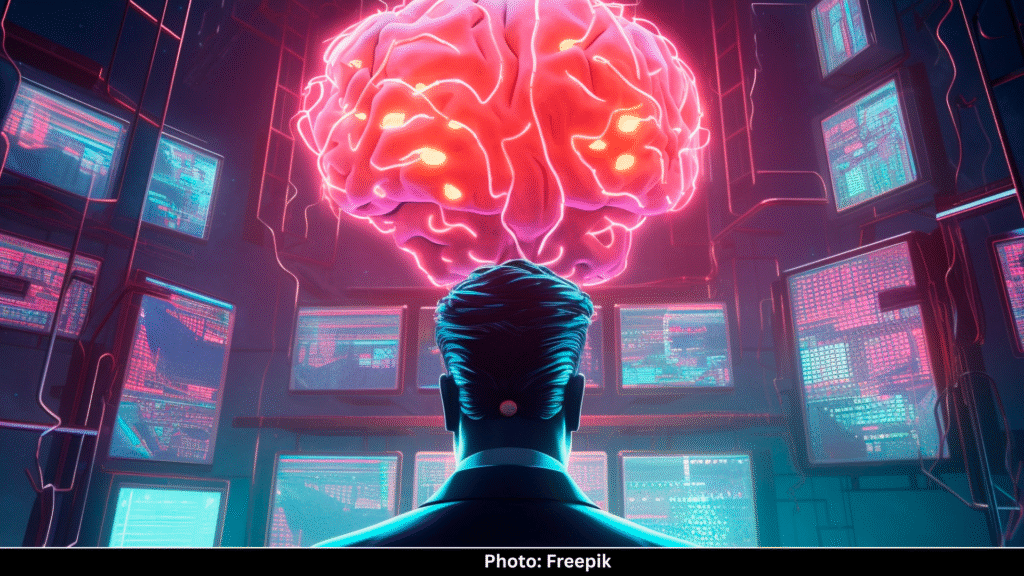Déjà Vu Explained: You’re mid-conversation with a friend, or walking into a café you’ve never been to, and a strange wave of recognition hits you. You’ve lived this moment before. You know what’s about to happen, even though you know logically it’s impossible. That sensation has a name: déjà vu.
It’s brief, it’s unsettling, and it leaves most people wondering what just happened. The strange thing is how universal it is. Studies suggest the majority of people have experienced déjà vu at least once in their lives. For some, it’s rare. For others, it’s a frequent visitor. Either way, it raises the same nagging question: is it just a brain misfire, or is there something deeper going on?
Where the Idea Came From
The word déjà vu comes from French, meaning “already seen.” It was first popularized in the late 1800s by philosopher Émile Boirac, though the experience itself long predates the label. Plato hinted at something similar when he described learning as remembering truths the soul already knew.
In religious and spiritual traditions, déjà vu has often been tied to reincarnation or divine memory. In literature, it became a handy symbol for fate, loops, or second chances. By the time modern psychology arrived, déjà vu had one foot in science and the other in mysticism, a balance it still carries today.
Who Experiences Déjà Vu the Most
Déjà vu doesn’t strike evenly across the population. Research shows it peaks in people between 15 and 25 years old. After that, it tends to decline with age.
Why the young more than the old? One theory is exposure. Young adults travel more, experiment more, and consume more stories through books and films. The more new places and scenarios you encounter, the more likely your brain is to misfire in recognizing them.
Another theory is neurological. Younger brains are more active in forming and retrieving memories, and those memory systems are more prone to glitches. In contrast, older adults may simply experience it less because memory recall slows with age.
There’s also a medical dimension. People with temporal lobe epilepsy often report intense, recurring déjà vu just before seizures. This connection between déjà vu and abnormal electrical activity in the brain is one of the strongest clues that the phenomenon isn’t supernatural but neurological.
The Brain at Work: How Déjà Vu Might Happen
Here’s the thing: your brain is constantly juggling multiple streams of information. It processes what you see, hear, and feel, while also cross-checking with your memory to see if anything matches past experience. That’s a lot of heavy lifting. Sometimes, the system stumbles.
Scientists have a few main theories:
1. Memory misfiring
The brain accidentally files the present as a past memory, giving you the false sense of recollection.
2. Dual processing delay
Information travels along parallel neural pathways. If one pathway delivers the signal slightly slower, the brain interprets the second arrival as a repeat.
3. Temporal lobe sparks
Small, irregular bursts of neuron activity in the temporal lobe, the region tied to memory, may create a sudden feeling of familiarity.
4. Familiarity without recollection
Psychologists describe this as a mismatch between two memory systems. One part of the brain signals “this is familiar,” while the part responsible for context and details comes up empty. The result: an unshakable feeling of recognition without an actual memory to back it up.
None of these theories fully explain déjà vu, but together they sketch a picture of the brain as a machine prone to occasional hiccups.
Stress, Sleep, and Everyday Psychology
Déjà vu isn’t always about deep neurological quirks. Sometimes, it’s just the result of everyday circumstances.
Lack of sleep can disrupt memory encoding. High stress makes the brain more error-prone. Even being distracted can cause a moment to slip through perception unevenly, creating that eerie sense of repetition.
Think about entering a new building that happens to resemble another one you visited years ago. You may not consciously recall the old place, but your brain draws a connection. That hidden overlap shows up as déjà vu.
What this really means is that déjà vu is not always about mystery. Sometimes, it’s just the brain taking shortcuts and mixing up its files.
The Explanations People Still Love
Even with science pointing to glitches, people rarely stop there. Déjà vu feels too strange, too loaded with meaning, to dismiss as a wiring error.
Here are the most popular alternative explanations:
- Reincarnation: déjà vu is a memory from a past life bleeding into the present.
- Premonition: déjà vu is a subtle glimpse of the future, a moment that will actually happen again.
- Parallel universes: déjà vu is a crossover between timelines, a slip where two versions of reality overlap.
- Simulation theory: déjà vu is a bug in the code of a programmed reality.
None of these have scientific backing, but they persist because they give people a story that feels as big as the sensation itself.
Déjà Vu in Culture and Storytelling
The idea of déjà vu shows up again and again in art, film, and literature. The Matrix famously used it as shorthand for glitches in a simulated world, with a black cat walking by twice as the sign.
Writers like Marcel Proust leaned on memory, repetition, and familiarity as central themes. Science fiction loves déjà vu because it instantly raises questions about time, identity, and free will.
The cultural grip of déjà vu isn’t surprising. It’s one of the rare phenomena that almost everyone has experienced, yet no one fully understands. That universality makes it fertile ground for storytelling.
Could It Really Be About Time?
This is where speculation gets wild. Physics acknowledges that time is stranger than our daily experience suggests. At the quantum level, particles don’t behave in neat, linear ways. That gives room for imaginative theories about déjà vu.
Some argue it’s a fleeting overlap between two versions of ourselves in parallel universes. Others think it’s a brain accessing a memory from the future, though that defies our understanding of causality.
Most scientists are cautious. There’s no evidence for these ideas, and they may never be testable. But the fact that déjà vu feels so uncanny means people will always be tempted to place it in the territory of time travel and multiverses.
Why Scientists Care About Déjà Vu
At first glance, déjà vu might seem like a harmless curiosity. But researchers study it because it opens windows into how memory works, and how it sometimes fails.
Understanding déjà vu may help us learn more about epilepsy, dementia, or PTSD. If déjà vu is about misfired signals or memory mismatches, those insights could inform treatment of memory-related conditions.
There’s also the philosophical side. Déjà vu reminds us that memory is not a perfect recorder of reality. It’s fragile, patchy, and deeply subjective.
Why It Fascinates Us So Much
Here’s the thing about déjà vu: even if science eventually explains it fully, it won’t lose its charm. That strange flash of familiarity will still feel bigger than us.
It matters because it makes us question the ordinary. For a few seconds, we’re pulled out of the flow of time and asked to wonder whether the present is as fixed as we think. That’s rare. Most of life moves on autopilot. Déjà vu disrupts that, even briefly, and forces us to think.
The Takeaway
So is déjà vu a glitch in the brain or a glimpse of another timeline? The scientific evidence points strongly to glitch. Yet it keeps sparking theories about parallel worlds, fate, and simulation because the sensation is too uncanny to dismiss casually.
Maybe the real value of déjà vu isn’t in proving anything about time or other universes. Maybe it’s in reminding us how mysterious the mind still is. Even a small slip like déjà vu reveals just how much we don’t know about memory, consciousness, and reality itself.
Until we understand those things fully, déjà vu will remain exactly what it is: a tiny moment that makes us pause, shiver, and wonder whether the world is more layered than it appears.




